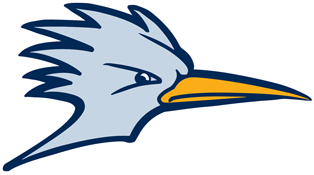Want a bachelor’s degree? Start here. When you’re ready to transfer, do your research and make a plan. We’ll work with you to help make your transfer experience a good one.
Transfer Information
-
Transfer Plan
- Explore transfer schools
- Go online to colleges/universities you are interested in transferring to and review their website for transfer information. Research important criteria, such as: academic major, size of college, public or private, class size, faculty credentials, location, tuition and fees, scholarships, admissions requirements, housing, student leadership opportunities, clubs and organizations, program accreditation, etc.
- Attend the SFCC College Transfer Fair to gather information and talk to transfer representatives.
- Review the transfer chart available on the left of this page.
- Check SFCC Events/Calendar for dates and times when transfer college representatives are going to be at SFCC
- Talk to a transfer admissions advisor
Seek information on admissions procedures and deadlines, application fees, required transcripts, campus visits, transfer orientations and scholarship opportunities. - Talk to a transfer academic advisor
Seek in-depth information regarding your academic program, including regional and program accreditation, faculty/student ratio, program pre-requisites/requirements, employment opportunities and trends, and research/leadership options. - Explore financial aid at the transfer school
Review the financial aid website including Federal and State aid, transfer scholarships and campus-based scholarships. Pay attention to application deadlines. Submit your FAFSA to the transfer school for the academic year you plan to begin attending. There are external scholarships that can be utilized at most colleges that will not appear on the campus website. - Schedule a campus visit/tour at the transfer school
Contact the admissions department to arrange a campus tour. Request the tour include a visit to your academic department, including program faculty and students, and academic classrooms. If you are planning to live in campus housing, ask to see Residential Life options. Think of other areas you may like to see such as the library, tutoring centers, and recreation spaces. - Select your transfer school(s) and complete the admission application process
- Prioritize your needs and select the top transfer school based on your requirements. Submit the admissions application well in advance of the stated deadline. Have your official academic transcripts from all colleges you have attended sent to the transfer school. Check in with the college every 2-3 weeks to ensure they have everything needed for the admissions process.
- Apply for scholarships and complete FAFSA for transfer school(s), if not completed previously.
- Request your SFCC Official transcript.
- Send final official SFCC transcript to transfer school
Once you have completed your final semester and grades (and certificates or degrees) have been processed, request your official transcript be sent to the transfer school. - Schedule advising appointment at transfer school to enroll
Once you receive your acceptance letter from the transfer school, confirm when enrollment opens. Schedule an appointment with your academic adviser to enroll in classes. - Attend orientation at transfer school
Research orientation options and register. If your college has a transfer student orientation, it will be tailored to the needs of transfer students.
- Explore transfer schools
-
General Education (Core 42)
 State Fair Community College faculty and staff maintain the belief that a core of learning experiences exist that are invaluable to all students regardless of their present or future roles in the workplace and the community. These core experiences, which are addressed and assessed in the general education program, are consistent with the required skill-based and knowledge-based learning outcomes identified by the Missouri Coordinating Board for Higher Education (CBHE). They are also consistent with the college’s Institutional Learning Outcomes (ILOs) that students will achieve upon completion of their general or specialized study.
State Fair Community College faculty and staff maintain the belief that a core of learning experiences exist that are invaluable to all students regardless of their present or future roles in the workplace and the community. These core experiences, which are addressed and assessed in the general education program, are consistent with the required skill-based and knowledge-based learning outcomes identified by the Missouri Coordinating Board for Higher Education (CBHE). They are also consistent with the college’s Institutional Learning Outcomes (ILOs) that students will achieve upon completion of their general or specialized study.The CBHE outcomes include mastering the skills of communicating, higher-order thinking, managing information, and valuing through the completion of at least 42-semester hours. These are distributed across the broad knowledge areas of communications, humanities and fine arts, natural and mathematical sciences, and social and behavioral sciences. The ILOs include thinking critically, communicating effectively, behaving responsibly, valuing others, developing life skills, utilizing technology, and investigating world processes. The basic competencies are achieved through the completion of the CORE 42 in its entirety.
More information on Core 42 is available in the SFCC Catalog.
-
Partnerships with Transfer Institutions

- Central Methodist University
- Drury University
- Grantham University
- University of Central Missouri
- University of Missouri-Columbia
- University of Phoenix
- Park University
- Ottawa University
- Western Governors University
Articulation/Transfer Agreements
SFCC has multiple articulation/transfer agreements specific to academic programs and degree options. Please review the specific articulation/transfer agreements with the institution you are wishing to attend for details.
Transfer College Links
SFCC students seeking a bachelor’s degree are well prepared to take their next academic step. Students may find helpful links to support you in exploring transfer opportunities.
- Title IX
- Institutional Effectiveness
- Admissions & Outreach
- Academic Records & Registrar
- Adult Education & Literacy
- Campus Store
- Career & Technology Center
- Career Services
- College Now
- Counseling Services
- Disability Resource Center
- Finance & Administration
- Human Resources
- Information Technology Services
- Navigator Advising
- Marketing & Communications
- Safety & Security
- Student Success Center
- Testing Services
- Transfer Services
- TRiO SSS
- Tutoring Services
- Upward Bound
Office
Student Success
Hopkins Student Services
Room 750
Hours
8 a.m. to 5 p.m. Monday-Friday
(660) 530-5831
transferservices@sfccmo.edu

